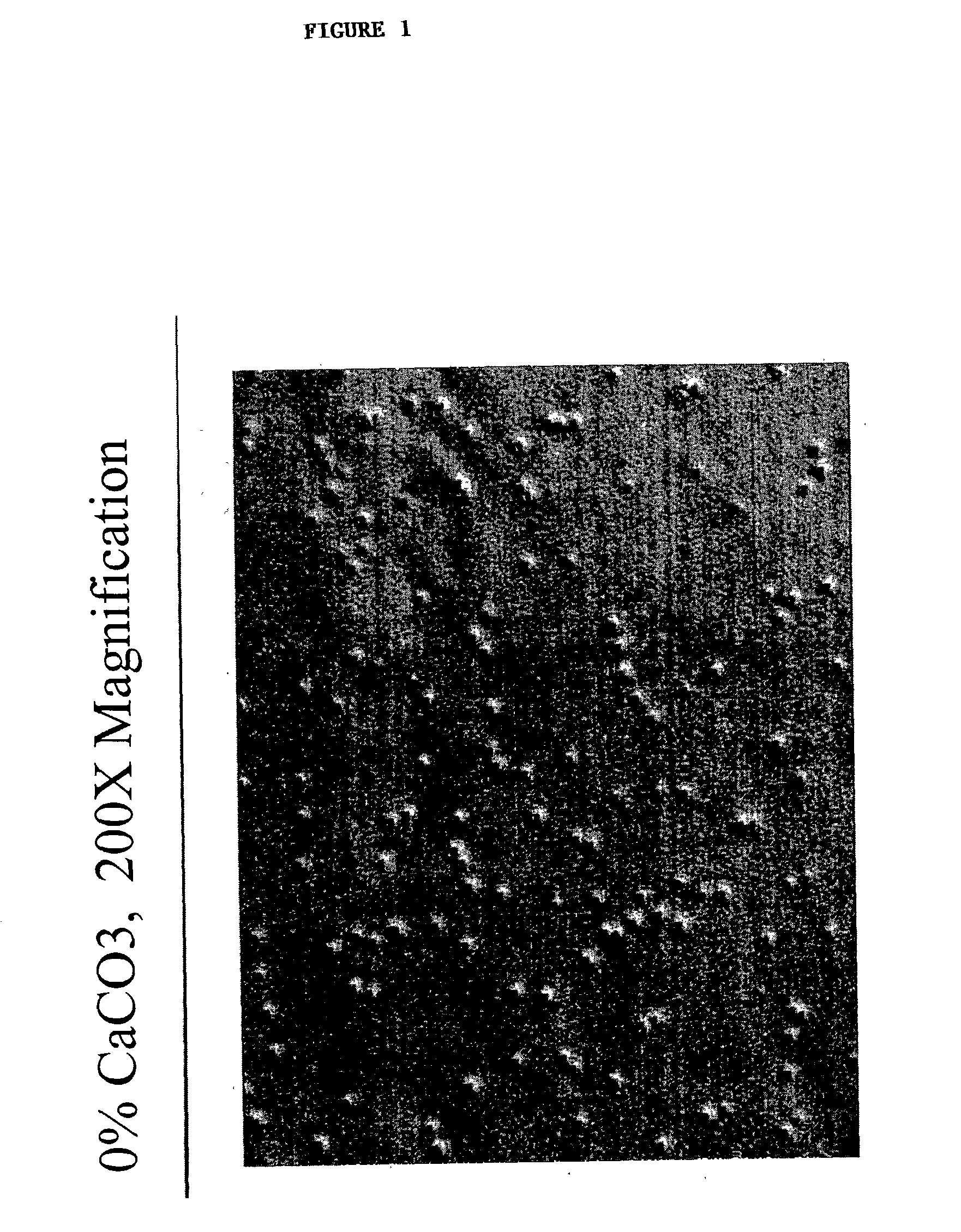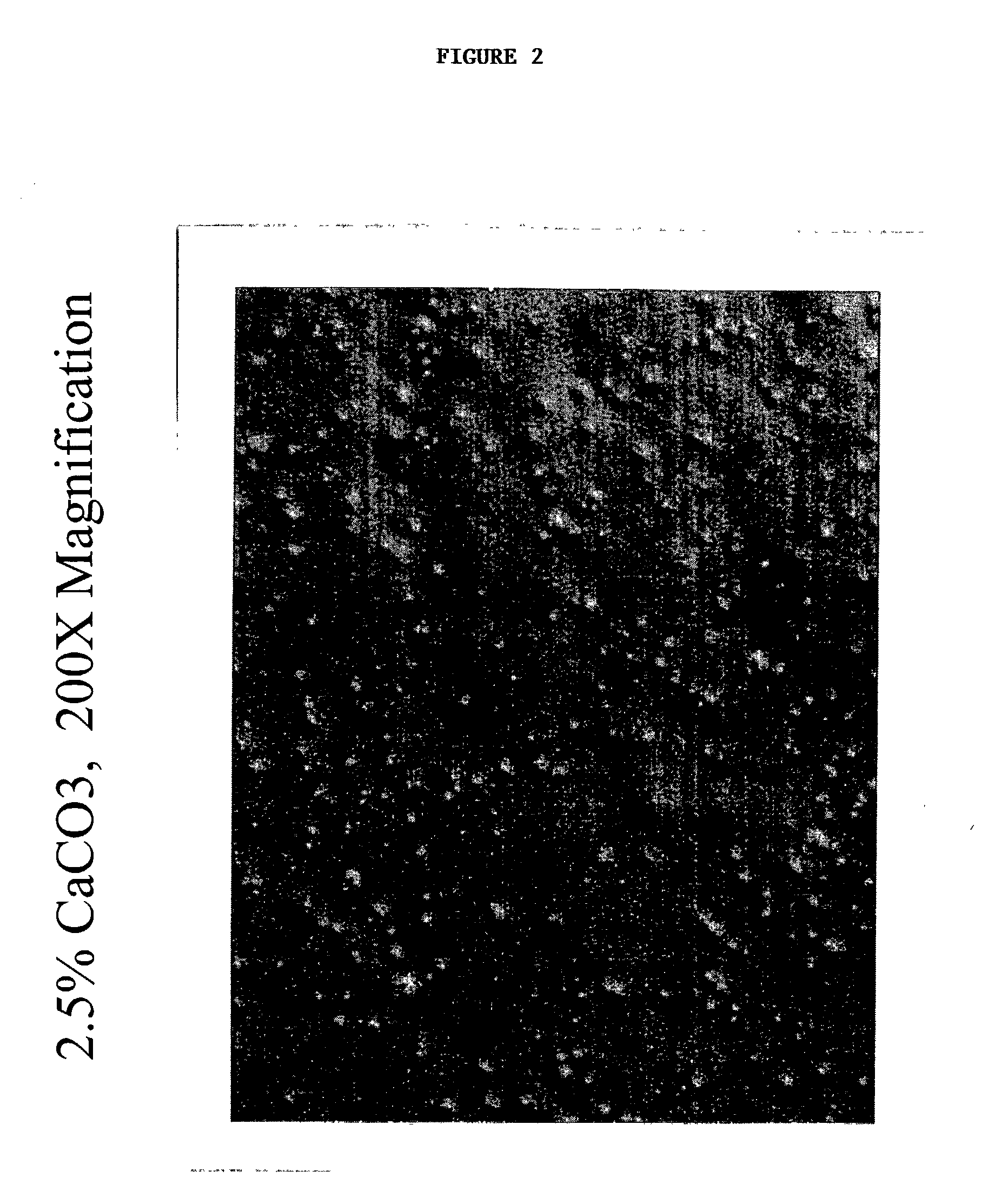Polyolefin oil resistant film using porous particles
- Summary
- Abstract
- Description
- Claims
- Application Information
AI Technical Summary
Benefits of technology
Problems solved by technology
Method used
Image
Examples
Embodiment Construction
[0030] 80 gauge biaxially oriented polypropylene (BOPP) films were manufactured on a 1.5-meter wide BOPP production line. The skin layer was measured at 8 gauge units. The skin layer used an ethylene-butene-propyle-ne terpolymer having a density of 0.9 gm / cc and a melt flow rate of 9.5g / 10 min as measured by ASTM D1238. Different weight percent of calcium carbonate was added to this skin layer as shown in Table 1. The density of calcium carbonate was 2.74 g / cc. The average particle size of the skin layer was about 1 micron. The skin layer also contained 4,000 ppm by weight of Tospearl particles, which are cross-linked silicone particles of 2-micron diameter and a density of 1.32 g / cc. Isotactic polypropylene resin was used in the core layer. The melt flow rate of the core isotactic polypropylene homopolymer was 1.6 g / 10 min. The films were heated to 135.degree. C., stretched 5 times in the machine direction, cooled, introduced into a tenter oven, heated to 164.degree. C., stretched ...
PUM
| Property | Measurement | Unit |
|---|---|---|
| Fraction | aaaaa | aaaaa |
| Fraction | aaaaa | aaaaa |
| Fraction | aaaaa | aaaaa |
Abstract
Description
Claims
Application Information
 Login to View More
Login to View More - R&D
- Intellectual Property
- Life Sciences
- Materials
- Tech Scout
- Unparalleled Data Quality
- Higher Quality Content
- 60% Fewer Hallucinations
Browse by: Latest US Patents, China's latest patents, Technical Efficacy Thesaurus, Application Domain, Technology Topic, Popular Technical Reports.
© 2025 PatSnap. All rights reserved.Legal|Privacy policy|Modern Slavery Act Transparency Statement|Sitemap|About US| Contact US: help@patsnap.com



